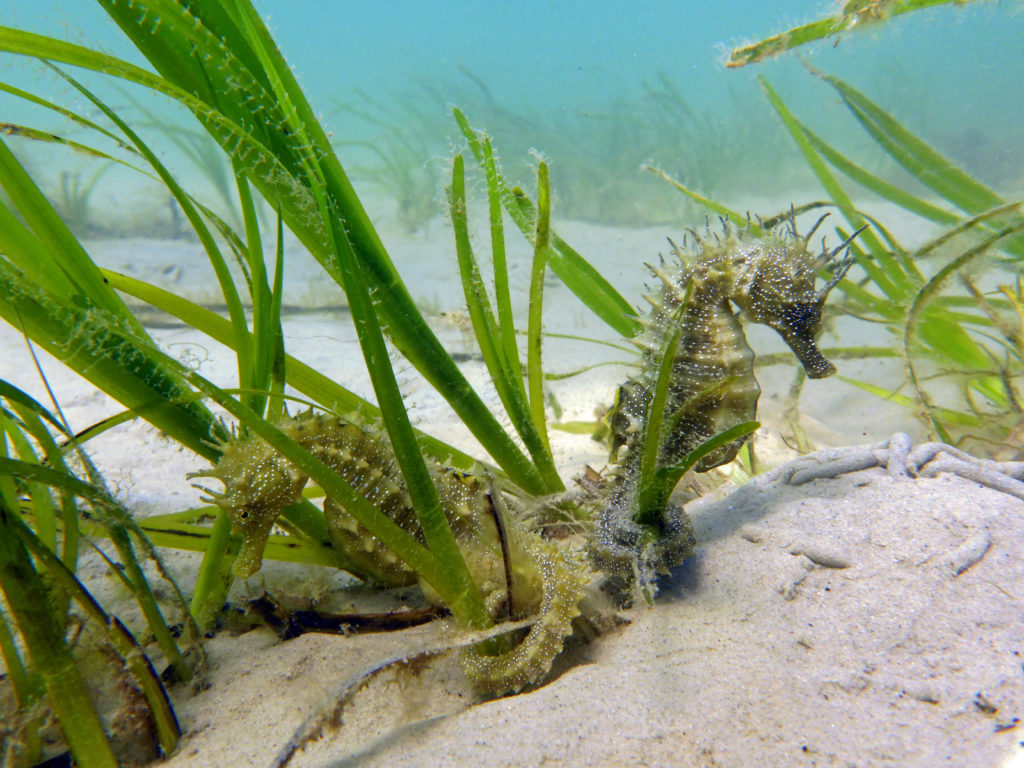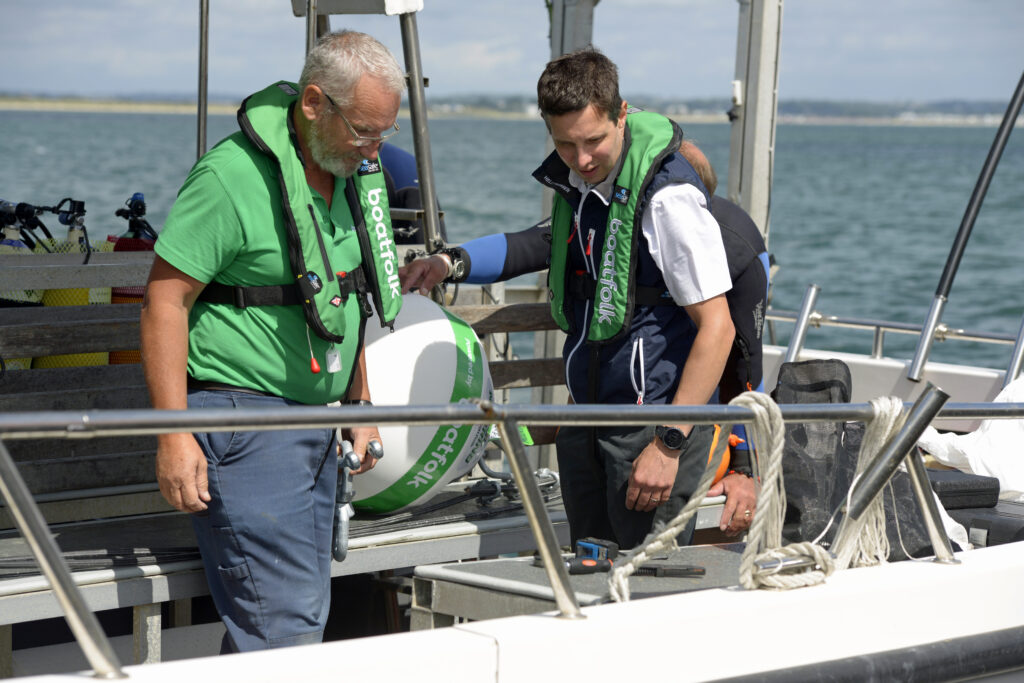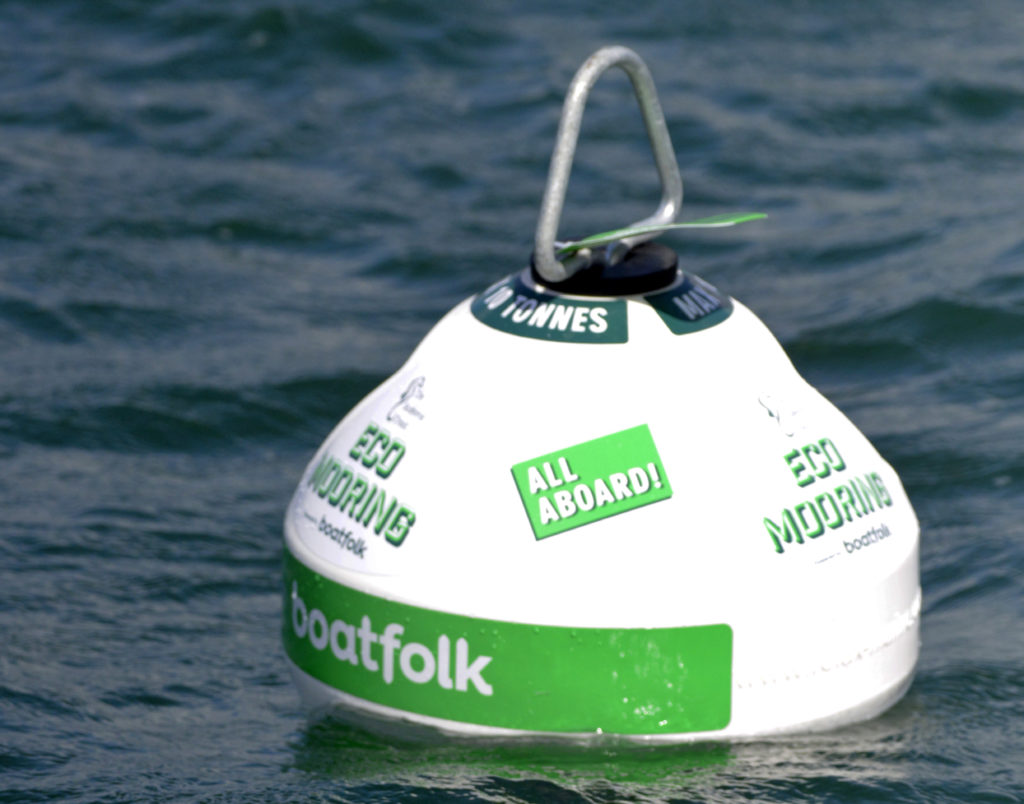In a bid to protect seahorses, boats are going to be asked not to drop anchor in Studland Bay in the area of seagrass meadow – the seahorses’ natural habitat on the seabed.
The Marine Management Organisation (MMO), a government organisation to protect the UK’s marine environment, has published a strategy document for Studland Bay detailing its plans.
This follows the designation of Studland Bay as a marine conservation zone (MCZ) in 2019 to protect the breeding ground of the endangered Spiny Seahorse, one of Britain’s native seahorse species.


The Spiny Seahorse photographed in Studland Bay
Stopping short of a ban
Stopping short of a ban following consultations with the boating community, a voluntary no anchor zone for boats off South Beach and Middle Beach will be introduced in two stages over 2021 and 2022:
- 17th December 2021 – An interim voluntary no anchor zone will commence protecting the core seagrass habitat off South Beach and Middle Beach.
- 1st June 2022 – The interim voluntary no anchor zone will be extended to cover a larger area of seagrass off South Beach and Middle Beach.

Voluntary no anchor zone marked out by blue line to be introduced from 17th December 2021. The area of green is the seagrass meadow

Voluntary no anchor zone marked out by blue line to be introduced from 1st June 2022
Installation of eco moorings
Alongside this plan, boat owners will be encouraged to apply for marine licences to install advanced mooring systems or eco moorings, which are an environmentally friendly alternative to using traditional moorings in seagrass. Applicants will have to cover the cost of the installation themselves.
This will allow boats to continue to moor in the area without damaging the environment. The report is also encouraging the owners of the existing traditional swing moorings in Studland Bay to replace them with eco moorings.


Installation of 10 eco moorings in July 2021 in Studland Bay as part of a trial
Eco mooring trial
A trial of 10 of these eco moorings were installed in Studland Bay in July 2021 in a joint initiative between the charity, The Seahorse Trust and national marina group Boatfolk.
Eco moorings do not have metal chains that risk uprooting the seagrass as they rise and fall on the tide, but have an elastic line that attaches to a permanent anchor in the seabed. This is attached to a buoy and is able to expand with the sea level and not drag along the seabed at low tide.


The metal chain of a traditional mooring can scour the seabed, up rooting seagrass
“Take ownership and work collaboratively”
Publishing its report, the MMO said:
“It was decided that the no anchor zone would be voluntary, based on feedback from stakeholders. This will give users of the bay the opportunity to take ownership and work collaboratively, with the MMO and each other, to ensure Studland Bay MCZ is protected.
“The MMO will be liaising with local groups to raise awareness of the voluntary measure. The MMO will develop plans to monitor and review the voluntary measure, alongside partners. The MMO will inform key stakeholders about how they can participate in reviews.
“The MMO would like to thank everyone who has participated in the development of this approach. The feedback received from the public has been extremely valuable.”
Further information
Studland Bay Marine Conservation Zone Habitat Protection Strategy report, published in September 2021





